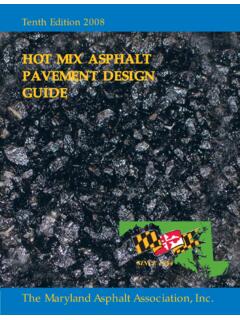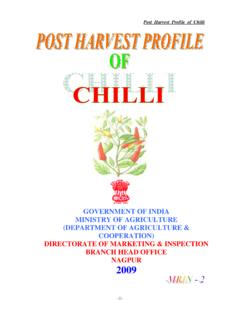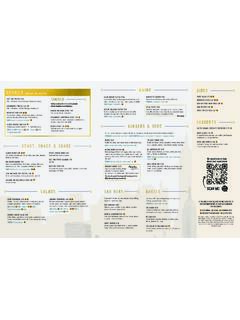Transcription of Food Production Operations - Tutorialspoint
1 Food Production Operations Food Production Operations i About the Tutorial Food Production Operations is an activity of preparing food products on mass scale and all the Operations pertaining to it. This tutorial introduces you to various cereals and pulses as well as culinary seeds, spices, nuts, and herbs. It also introduces you to various equipment, cooking methods, menus, and Indian cookery. This tutorial teaches basic terms used in food Production . After going through this tutorial, you will find yourself at a moderate level of expertise of retail management basics from where you can take yourself to next levels. Audience This tutorial has been prepared for beginners to help them understand the basics of Food Production Operations . It is going to be quite useful for the ones who are keen on making a career in Hospitality and Tourism.
2 For all other enthusiastic readers, this tutorial is a good learning material. Prerequisites We assume the readers of this tutorial have a passion for food, cooking, and creativity. The reader must also possess a strong desire to pursue culinary arts as a career. Creativity, punctuality, and excellent interpersonal skills are a plus. Disclaimer & Copyright Copyright 2019 by Tutorials Point (I) Pvt. Ltd. All the content and graphics published in this e-book are the property of Tutorials Point (I) Pvt. Ltd. The user of this e-book is prohibited to reuse, retain, copy, distribute or republish any contents or a part of contents of this e-book in any manner without written consent of the publisher. We strive to update the contents of our website and tutorials as timely and as precisely as possible, however, the contents may contain inaccuracies or errors.
3 Tutorials Point (I) Pvt. Ltd. provides no guarantee regarding the accuracy, timeliness or completeness of our website or its contents including this tutorial. If you discover any errors on our website or in this tutorial, please notify us at Food Production Operations ii Table of Contents About the Tutorial .. i Audience .. i Prerequisites .. i Disclaimer & Copyright .. i Table of Contents .. ii PART 1 INTRODUCTION ..1 1. FPO Introduction to Cookery .. 2 What is Cookery?.. 2 Kitchen Staff (Brigade de Cuisine) .. 4 Design Considerations of a Commercial Kitchen .. 5 Typical Layouts of a Commercial Kitchen .. 5 Terms Used in Food Production Operations .. 7 2. FPO Kitchen Equipment & Fuel .. 9 Commercial Food Production Equipment .. 9 Maintenance Equipment in Commercial Kitchen .. 16 Special Equipment in Commercial 17 Fuels and Energy Used for Cooking.
4 20 PART 2 BASIC FOOD Operations .. 22 3. FPO Vegetarian 23 Introduction to Grains .. 23 Difference between Cereals and Pulses .. 23 Introduction to Cereals .. 24 Introduction to Pulses or Beans .. 24 Use of Vegetables in Cuisines .. 26 Classification of Vegetables .. 27 Fruits used in Cuisines .. 31 Classification of Fruits .. 31 Vegetable Stock and Broth .. 35 Vegetable Soups .. 35 Sauces .. 36 Salads .. 37 4. FPO Non-Veg Cookery .. 38 Classification of Eggs .. 38 Classification of Meats .. 39 Classification of Sea Foods .. 40 Storing and Cooking Fish .. 42 Meat Stock and Fish Stock .. 42 Meat and Fish Soups .. 43 Meat Sauces .. 44 Non-Veg Salads .. 44 Food Production Operations iii 5. FPO Seeds, Nuts, Herbs, and Spices .. 46 Culinary Seeds .. 46 Culinary Nuts .. 48 Herbs .. 51 Spices .. 53 6. FPO Methods of Cooking.
5 56 Dry Heat Cooking .. 56 Moist Heat Cooking .. 57 Combination Cooking .. 58 7. FPO Planning Menu .. 60 What is Menu? .. 60 Food Menus .. 60 Beverage Menu .. 62 Bar Menu .. 62 Factors Affecting Menu Compilation .. 63 Appropriate Pairing of Food and Beverage .. 63 Trends in Modern Diets .. 64 PART 3: BASICS OF BAKERY & CONFECTIONERY .. 65 8. FPO Introduction to Bakery .. 66 What is Baking? .. 66 Commodities Used in 66 Basic Bread 67 Types of Cakes .. 69 Pastry .. 70 Pastes, Creams, Fillings, and Sauces .. 71 9. FPO Confectionery .. 73 What is Confectionery?.. 73 Commodities Used in Confectionery .. 74 Some Popular Confections .. 75 PART 4: BASICS OF INDIAN COOKING .. 76 10. FPO Indian Cooking .. 77 Widely Used Ingredients in Indian Cuisine .. 77 Importance of Chhonk in Indian Cuisine .. 79 Indian Veg Stews.
6 79 Indian Non-Veg Stews .. 80 Indian Daals .. 80 Indian Flatbreads .. 82 Indian Rice Dishes .. 86 Indian Snacks .. 89 Indian Desserts .. 92 Indian Chutneys and Pickles .. 94 Food Production Operations iv Indian Street Food .. 94 11. FPO Indian Masalas and Gravies .. 95 Indian Masalas .. 95 Basic Indian Gravies .. 98 PART 5: KITCHEN COMMUNICATION .. 101 12. FPO Kitchen Communication .. 102 Role of a Kitchen Manager .. 102 Taking Orders .. 103 Executing Orders .. 103 Food Production Operations 1 Part 1 Introduction Food Production Operations 2 Cooking is like painting or writing a song. Just as there are so many notes or colors, there are only so many flavors it s how you combine them that sets you apart..Wolfgang Puck, American Chef, Restaurateur, and Occasional Actor. Food Production and its related Operations are integral elements of hospitality management, hotel management, and restaurant businesses.
7 It requires a skilled staff who can produce a wide variety of quality foods. In addition, the culinary staff of a hotel or a restaurant is also required to produce food in a large quantity. Let us start with understanding the basic term Cookery in detail. What is Cookery? Cookery is an art and science of preparing food for consumption by using heat. Cookery is an age-old practice. A primitive human must have found a piece of meat or vegetable cooked in the bushfire by chance. He must have found it edible, chewable and easy to consume. Probably, he even must not have cooked deliberately until he knew how to create fire. The simplest method of cooking was holding a piece of meat or vegetable in the fire directly, which is still in practice, with a little sophistication. From the age-old cooking practices to cooking for fine dining, cookery has come a long way with the evolution of humans, their skills, diverse cultures, and the equipment.
8 Today, cookery is an inseparable part of our lives that rules our tongues and hearts. Why Cook Food? We can have some foods in the raw form too, such as salads and fruits but we need to cook certain foods such as beans and meat to make them edible. 1. FPO Introduction to Cookery Food Production Operations 3 In addition, if we eat some vegetables without cooking, they can transfer harmful bacteria or substances into our bodies. For example, uncooked beans contain anti-digestive enzymes. Uncooked capsicum (Bell Pepper) contains Capsaicin that can create burning of stomach lining. Cooking helps to destroy unwanted substances present in the food and unwelcomed effects of consuming it. There are many reasons behind cooking food. Some of them are: To make the food digestible. To kill any harmful bacteria present in it.
9 To make appearance of the food pleasant. To change its physical and chemical form. Let us now see the organization of the Kitchen Department. Food Production Operations 4 Kitchen Staff (Brigade de Cuisine) The kitchen staff (brigade de cuisine) needs to work harmoniously to avoid possibility of any error. The kitchen staff is organized in the following way: The responsibilities of kitchen staff are as follows: Role Responsibilities Chef de Cuisine Main cook. Overall management of kitchen and staff, supervising, creating new recipes, and training apprentice. Sous Chef Deputy cook. Takes charge in the absence of Executive cook. Chef Tournant Has skills and knowledge of every section. Takes charge as and when required. Chef Grade Manager Prepares all cold savory food. Chef Saucier Prepares saut ed items.
10 Chef Poissonier Fish and Seafood cook. Prepares sea food dishes. Chef Patissier Pastry cook. Prepares cakes, breads, and pastries. Chef Entremetier Hot appetizers cook. Prepares soups and stocks. Commis Junior cook. Food Production Operations 5 Design Considerations of a Commercial Kitchen Since a large quantity and variety of food is produced in the professional kitchens, various designs are considered before setting up a kitchen. The food Production managers must consider the following factors with respect to the kitchen. Restaurant menu and service types Heating, ventilation, and air conditioning Employee workflow Storage, food Production , cleaning, and service space Equipment Drainage and plumbing Communication among employees Safety of employees and property Typical Layouts of a Commercial Kitchen Some typical layouts of a commercial kitchen are given below.
















